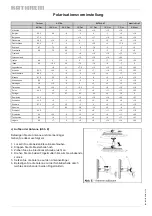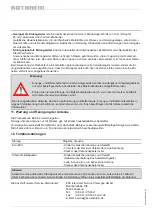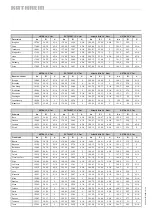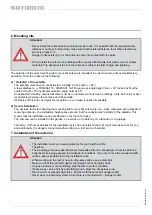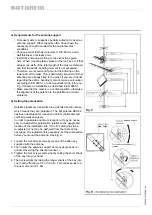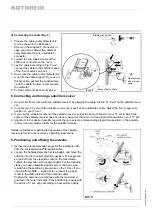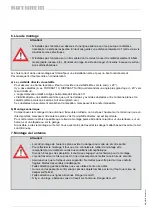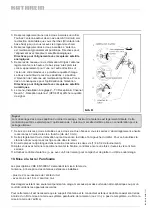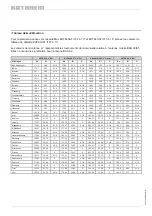
936.2391/D/0806/7.12e
3. Now loosen one wing nut on the mast bracket. Turn the
antenna around the mast axle (Azimuth) toward the position
where the desired satellite is (basic direction is South) until
you receive the selected programme.
4. Tighten the wing nut slightly. The antenna is now roughly
aligned.
Instructions for alignment with analogue receivers
5.
Loosen the elevation screw again. Move the antenna slight-
ly up and down until you see the
fi
rst ”spikes“ in either case
on the screen of your television set.
The best picture quality is found in the middle of these two
positions. The elevation of the antenna is then optimised.
Slightly tighten one elevation screw again.
Instructions for alignment with digital receivers
6.
The signal quality is displayed in the menu „Installation &
Settings”, „TV Reception & Channel Search“ and „Signa
Reception“ (UFS 601si).
Note:
The Azimuth position of the antenna will be slightly altered when the wing nuts of the mast clamp are tightened.
This twisting effect can be useful for optimising, but it must be taken into account for the subsequent tightening.
7. Tighten the wing nuts crossways. The wing nuts are screwed tight enough if they are
fi
rst tightened slightly and
then fully tightened with the aid of an open-ended spanner (13 mm jaw size).
8. Next, slightly tighten the left and the right elevation screws of the mast clamp, taking for this purpose the short
shank of the Allen key into your hand.
9. Then take the longer shank of the key into your hand and tighten the two screws effecting a 1/4 to 1/2 turn.
10. After the antenna has been positioned and is
fi
rmly
fi
xed, check if all screws have been suf
fi
ciently tightened.
11. Secure the cable on the support arm with the aid of cable binders in order to avoid that the cable gets damaged.
10. Grounding the antenna/Lightning protection
According to the VDE EN 50083-1 safety regulations, it is imperative to ground the antenna.
Exempted from these regulations are antennas
- which are installed 2 m below the edge of the roof
- and are mounted less than 1,5 m away from a building
Danger exists not only during a thunderstorm but also because of static charge of connected appliances which can
trigger short-circuits.
Therefore, it is necessary that the antenna support and the outer conductor of the antenna cable be grounded via
an appropriate vertical earthing wire which is connected to the lighting protection system of the house (if no such
system exists, connection to the earthing conductor of the building is necessary).

